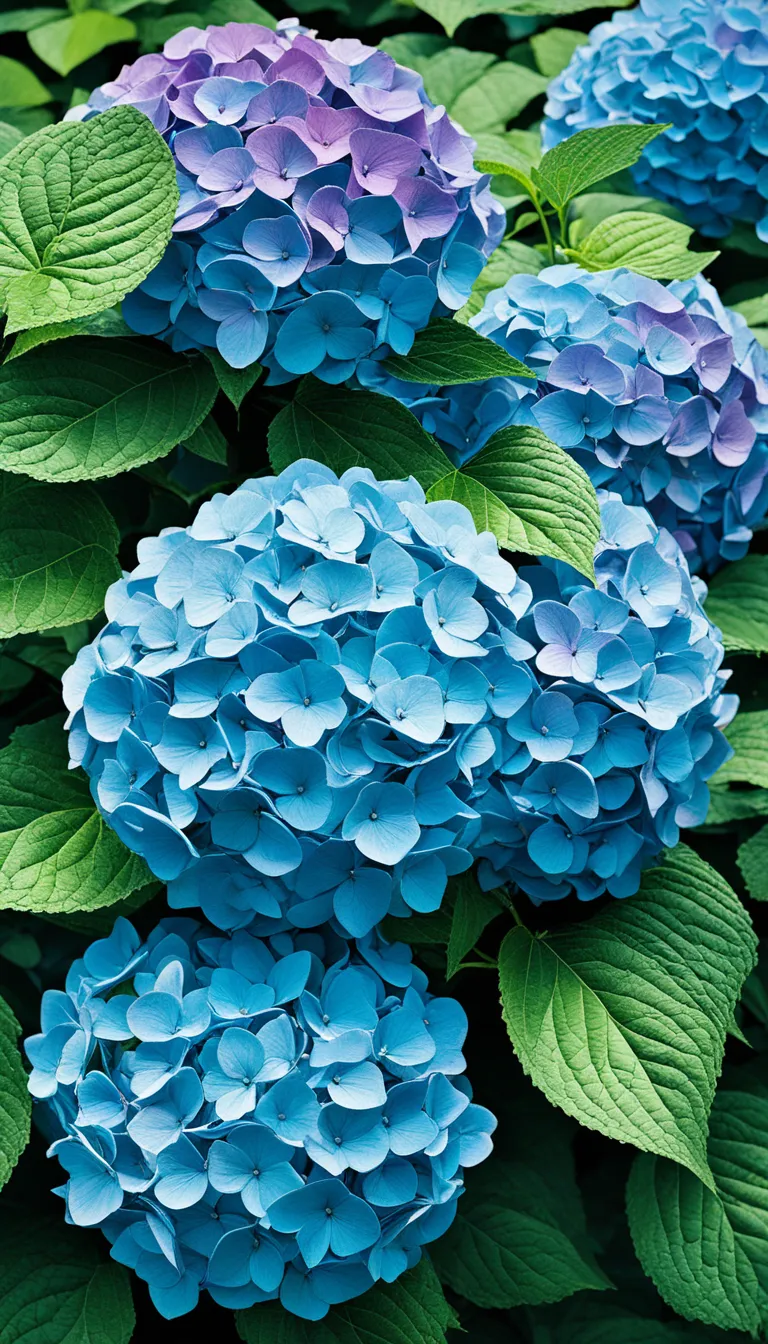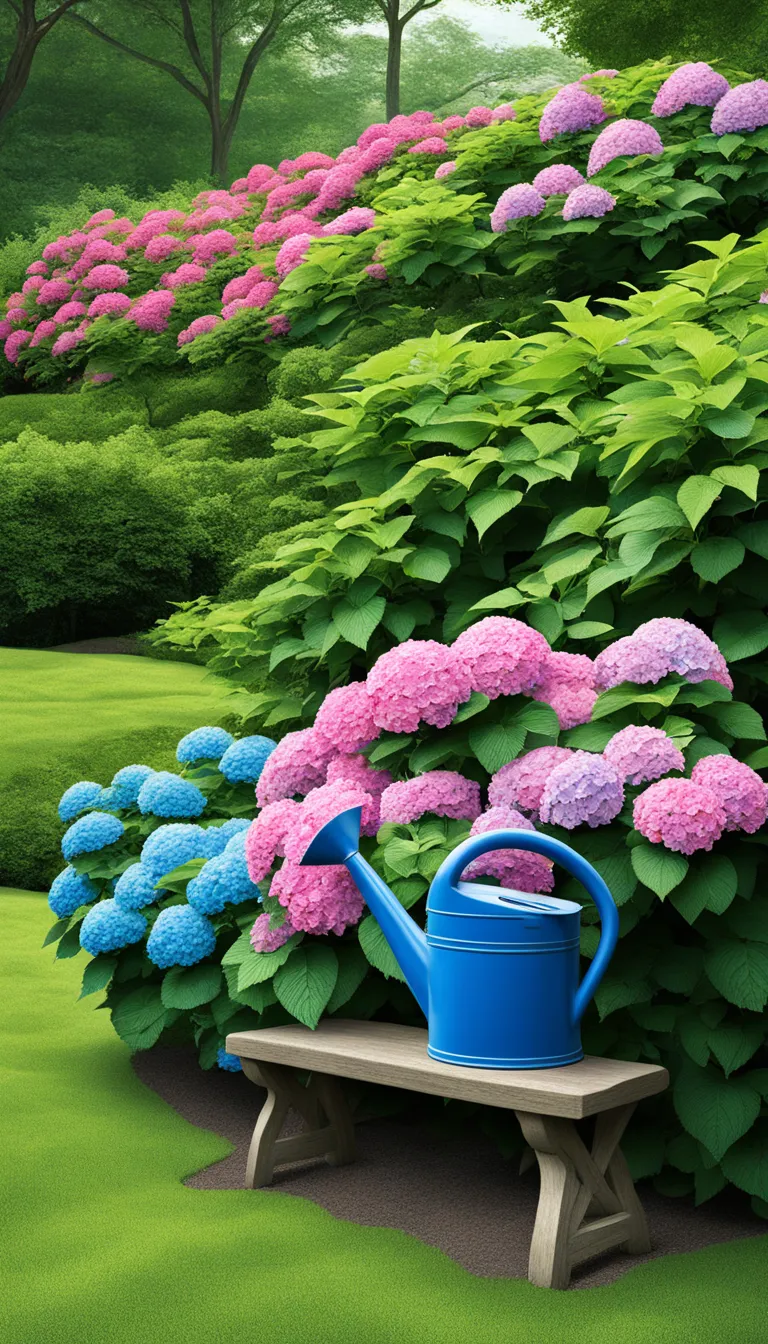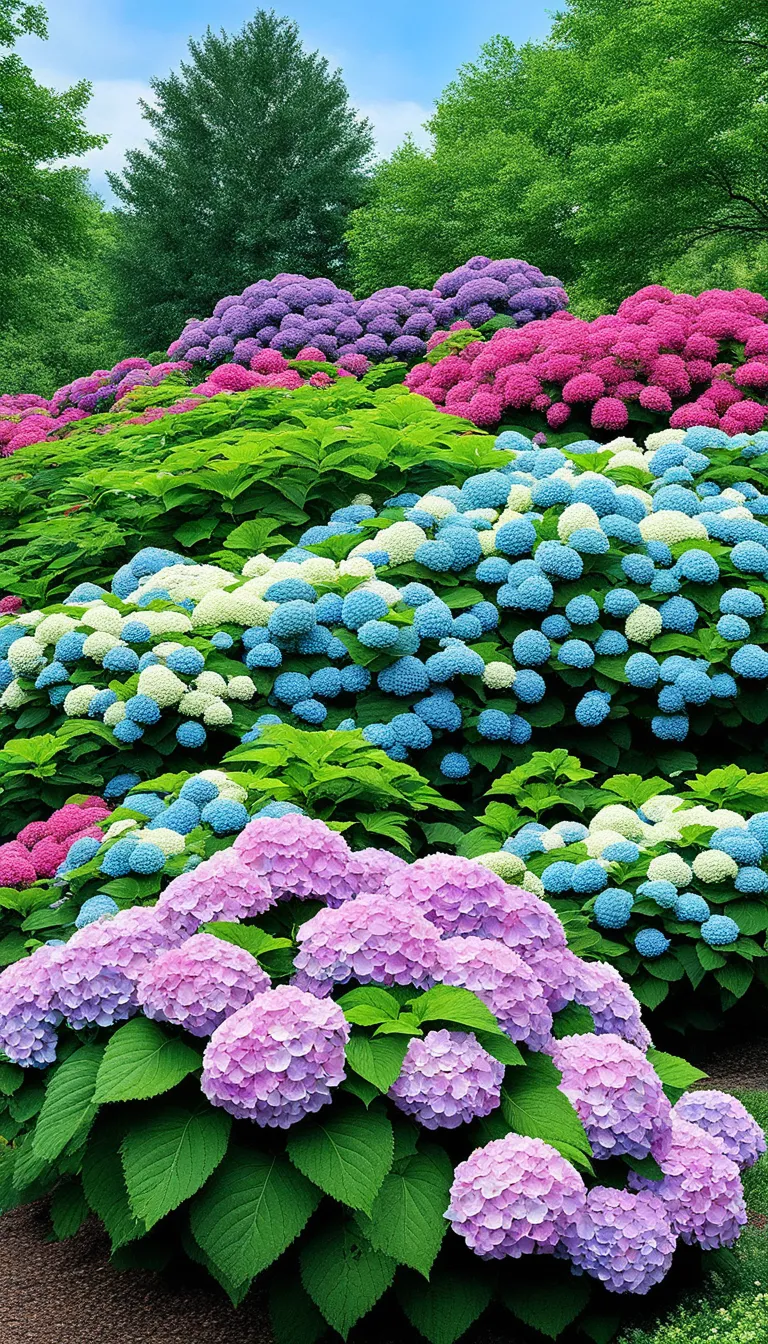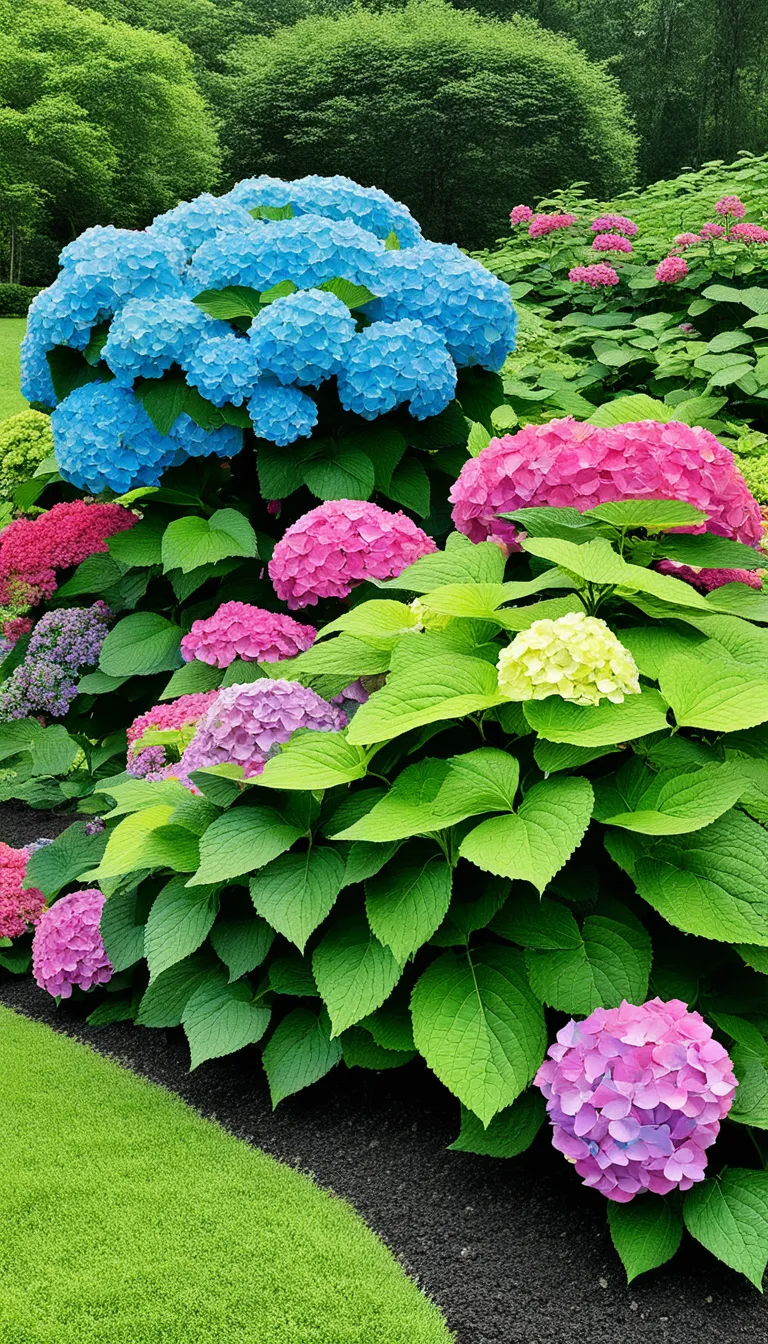Discover the beauty and diversity of hydrangeas, a garden favorite that never fails to surprise with its explosive array of colors and forms. Whether you’re a seasoned gardener or a budding green thumb, understanding the essentials of hydrangea care and the various types available can transform your garden into a vibrant tapestry of blooms.
Hydrangeas are enchanting flowering shrubs known for their large, showy blooms that can captivate any onlooker. Originating from Asia and the Americas, these plants have become a staple in gardens worldwide, thanks to their ability to adapt and their generous flowering nature. With their lush foliage and head-turning flowers, hydrangeas can add a touch of elegance to any outdoor space.
Proper care is crucial for keeping your hydrangeas happy and healthy. Soil, water, and pruning are the three pillars of successful hydrangea care. They thrive in moist, well-drained soil with plenty of organic matter. Watering is essential, especially during dry spells, but be careful not to overwater. Pruning depends on the variety, but generally, removing spent flowers and dead branches can encourage new growth and more abundant blooms.
Hydrangeas come in a stunning variety of species and cultivars, each with its own unique charm. From the classic Bigleaf hydrangeas, with their large mophead or lacecap flowers, to the rugged Paniculata or ‘PeeGee’ varieties that can withstand colder climates, there’s a hydrangea for every garden. Let’s not forget the Smooth hydrangeas, known for their large, round flower heads, and the Oakleaf varieties, with their distinctive leaf shape and fall color.
- Bigleaf Hydrangeas (Hydrangea macrophylla) – Ideal for milder climates with ample moisture.
- Paniculata Hydrangeas (Hydrangea paniculata) – Hardy and perfect for colder regions.
- Smooth Hydrangeas (Hydrangea arborescens) – Adaptable and great for a variety of settings.
- Oakleaf Hydrangeas (Hydrangea quercifolia) – Notable for their foliage and autumn presence.
In conclusion, with the right care and selection, hydrangeas can be the explosive highlight of your garden, offering a surprise with every bloom. Embrace the diversity of these magnificent shrubs and watch your garden come to life with their spectacular display.

What is Hydrangea?
Discover the beauty and diversity of hydrangeas, including essential care tips and the various types available for your garden.
Imagine a plant so captivating that it seems to burst with color, each bloom like a miniature firework display in your garden. That’s the hydrangea for you—a stunning flowering shrub known for its large, vibrant blooms that can truly make your garden pop with excitement. But what exactly is a hydrangea? Well, let me tell you, it’s not just a plant; it’s a celebration of nature’s beauty!
Hydrangeas are part of the Hydrangeaceae family, which includes a variety of species and cultivars. They are native to Asia and the Americas, but have charmed gardeners around the world with their full, lush heads of flowers and their ability to change color based on the soil’s pH level. Can you believe that? A flower that changes color! It’s like having your very own garden chameleon.
These shrubs can range from small to large, making them perfect for any garden space. But don’t be fooled by their delicate appearance—they’re surprisingly hardy! With the right care, they can explode with blooms year after year, offering a spectacular show that will make your neighbors green with envy. Speaking of green, the leaves of hydrangeas are just as impressive, with a rich, verdant hue that complements those unforgettable blooms.
So, are you ready to dive into the world of hydrangeas? Let’s explore how to care for these beauties and discover the various types that can bring a surprise explosion of color to your garden. Stay tuned, because we’re about to get into the nitty-gritty of hydrangea care and the dazzling array of varieties available to you!

How to Care for Hydrangea?
So, you’ve fallen in love with the stunning hydrangeas in your neighbor’s garden, and now you’re wondering how to nurture these beauties in your own backyard? Fear not, because I’m about to spill the secrets of keeping your hydrangeas happy and blooming! First things first, let’s talk soil. Hydrangeas thrive in rich, well-drained soil with a touch of acidity. A pH between 5.2 and 5.5 is ideal for those classic blue blooms, while a more alkaline soil will give you shades of pink.
When it comes to watering, these plants are a bit like Goldilocks – they prefer it just right. Too much water and their roots will drown, too little and you’ll see their leaves wilting in protest. Aim for consistent moisture, especially during the hot summer months. A good rule of thumb is to water deeply three times a week, rather than a little every day. But hey, don’t just take my word for it, keep an eye on your plants; they’ll tell you if they’re thirsty!
Now, let’s chat about pruning. It might seem daunting, but with hydrangeas, it’s all about timing. Prune too early or too late, and you might be saying goodbye to next year’s blooms. Here’s a quick guide:
- Bigleaf and Lacecap – Prune right after blooming, but never after August.
- Paniculata and Smooth – These can be pruned in late winter or early spring before new growth starts.
- Oakleaf – Treat these like Bigleaf, but they can handle a bit more cold.
Remember, each variety has its own quirks and charms, and learning these will make you a true hydrangea whisperer. So, roll up those sleeves and get ready for a floral explosion in your garden that will leave your neighbors in awe!

What are the Hydrangea Varieties?
When you dive into the world of hydrangeas, it’s like setting off a firework of colors and forms. Each variety offers a unique surprise, bursting with its own special charm. So, what are some of the most popular varieties that could explode with beauty in your garden?
Let’s start with the Bigleaf hydrangeas (Hydrangea macrophylla), known for their large leaves and even larger blooms. These are the classic hydrangeas that often change color based on the soil’s pH level. A blue explosion in acidic soil, and a pink surprise in alkaline.
Next, we have the Panicled hydrangeas (Hydrangea paniculata), which are like a sudden burst of fireworks with their conical flower clusters. They are cold-hardy and can thrive in colder climates, bringing a touch of warmth with their white to pink flowers.
The Smooth hydrangeas (Hydrangea arborescens) are like a delightful shockwave with their massive, round flower heads. The ‘Annabelle’ is a popular cultivar, with its pure white, snowball-like blooms that can truly make a garden ‘pop’.
For a more subtle but equally impressive display, the Oakleaf hydrangeas (Hydrangea quercifolia) offer richly textured leaf shapes that resemble oak leaves, and their fall foliage is just as stunning as their flowers.
And let’s not forget the Climbing hydrangeas (Hydrangea petiolaris), which can scale walls and fences, bringing an unexpected explosion of lush greenery and white blossoms to vertical spaces.
Here’s a quick glimpse at these varieties:
| Variety | Scientific Name | Flower Color | Special Feature |
|---|---|---|---|
| Bigleaf | Hydrangea macrophylla | Blue, Pink | Color changes with soil pH |
| Panicled | Hydrangea paniculata | White to Pink | Conical flower clusters |
| Smooth | Hydrangea arborescens | White | Large round flower heads |
| Oakleaf | Hydrangea quercifolia | White | Distinctive leaf shape |
| Climbing | Hydrangea petiolaris | White | Excellent for vertical gardens |
Whether you’re after a bold statement or a subtle accent, there’s a hydrangea variety to meet your garden’s needs. Each one is a living testament to nature’s capacity for diversity and beauty – ready to surprise and explode with vibrant life in your own backyard.





